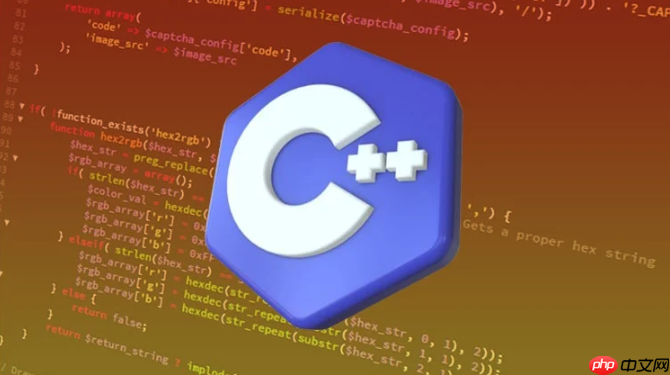最高效的方法是使用std::ifstream结合std::vector<char>预分配内存一次性读取,需以binary模式打开文件并检查读取完整性,适用于二进制和文本文件,兼顾性能与可移植性。

在C++中将一个文件完整读入内存,最高效的方法是使用标准库中的std::ifstream结合std::vector<char>或std::string,通过获取文件大小并一次性分配内存,避免多次动态扩容。以下是具体实现方式和注意事项。
这种方法先获取文件长度,分配足够空间,再将整个文件内容读入内存:
#include <fstream>
#include <vector>
#include <iostream>
std::vector<char> read_file_to_memory(const std::string& filename) {
std::ifstream file(filename, std::ios::binary | std::ios::ate);
if (!file.is_open()) {
throw std::runtime_error("无法打开文件: " + filename);
}
// 获取文件大小
std::streamsize size = file.tellg();
file.seekg(0, std::ios::beg);
// 分配内存
std::vector<char> buffer(size);
// 读取数据
if (!file.read(buffer.data(), size)) {
throw std::runtime_error("读取文件失败");
}
return buffer;
}
优点:只进行一次内存分配和一次I/O读取,效率高;适用于二进制和文本文件。
如果处理的是文本文件且希望结果为字符串,可直接使用std::string:
立即学习“C++免费学习笔记(深入)”;
#include <fstream>
#include <string>
std::string read_text_file(const std::string& filename) {
std::ifstream file(filename, std::ios::binary | std::ios::ate);
if (!file.is_open()) {
throw std::runtime_error("无法打开文件");
}
std::string content(file.tellg(), '\0');
file.seekg(0, std::ios::beg);
file.read(&content[0], content.size());
return content;
}
注意:虽然以 binary 模式读取,但内容仍可作为文本使用,避免换行符被转换。
要确保读取过程高效,需关注以下几点:
tellg() 获取大小后一次性分配,避免多次 realloc。file.gcount() 或 read() 的返回值验证是否完整读取。在Linux或类Unix系统上,对大文件可考虑使用 mmap 实现零拷贝映射:
优点:极大文件无需实际加载到内存,按需分页加载。
缺点:非跨平台,代码复杂度高,不适合小型项目。
对于大多数应用场景,推荐使用第一种基于std::vector<char>的方法。它简洁、高效、可移植,适合读取配置文件、资源文件或小到中等大小的二进制数据。
基本上就这些,不复杂但容易忽略细节,比如忘记设置 binary 模式或未检查文件状态。只要注意这些点,读取整个文件到内存就很稳妥。
以上就是c++++中如何将一个文件完整地读入内存_c++读取整个文件到内存的高效方法的详细内容,更多请关注php中文网其它相关文章!

c++怎么学习?c++怎么入门?c++在哪学?c++怎么学才快?不用担心,这里为大家提供了c++速学教程(入门到精通),有需要的小伙伴保存下载就能学习啦!

Copyright 2014-2025 https://www.php.cn/ All Rights Reserved | php.cn | 湘ICP备2023035733号